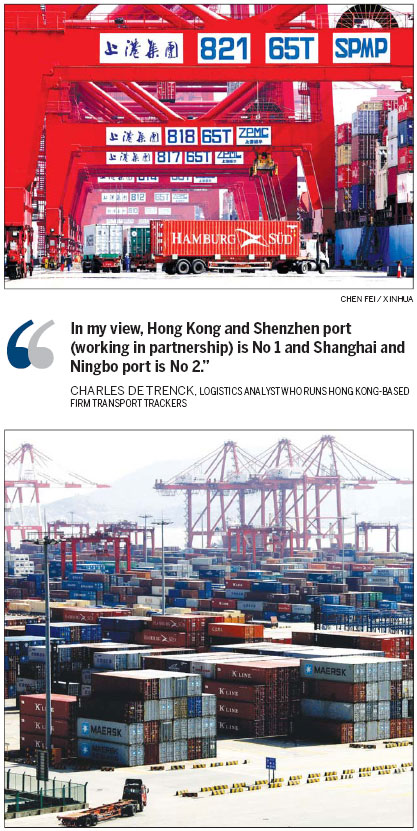Center
Sea Change
Updated: 2011-01-14 11:32
By WONG JOON SAN (China Daily European Weekly)
As China's cargo base grew, especially its manufacturing sector, demand for port and shipping services sector continued to fuel the expansion of port facilities along the coastal areas of the country. So much so that by 2009, six of the world's 10 largest ports were based on the mainland, according to Containerisation
|
|
But it is not all smooth sailing. As Chinese ports scramble to increase their container terminal handling capabilities, a lack of coordination between the ports has resulted in serious overcapacity problems and a wide disparity in tonnage handled by some of them.
A researcher at the China Ports Association, Meng Wenjun, says container port construction surged in the past decade, but many of the berths could not be filled as foreign trade dried up in the wake of the global financial crisis in mid-2008.
According to a report on the operations related to containers, mineral ore, coal and crude oil, several ports are reporting lower container volumes and are saddled with overcapacity because global demand for Chinese goods dropped during the worldwide recession.
Veteran logistics analyst Charles de Trenck, however, has a different view. According to him, container port ranking does not tell the entire story.
"In my view, Hong Kong and Shenzhen port (working in partnership) is No 1 and Shanghai and Ningbo port is No 2," says Trenck, who runs a Hong Kong-based firm called Transport Trackers.
"Nothing much has changed (on the Chinese port scene) with the exception that the leading partner in both of these relationships has relied more and more on the junior partner. In the case of Hong Kong, Shenzhen will overtake and become the more senior partner in the coming years," he explains.
Located in the southern region of the Pearl River Delta in Guangdong province, Shenzhen is one of the busiest and fastest growing ports in the southern mainland and the economic hinterland for Hong Kong trade with the mainland.
According to the Shenzhen Ports Association, Shenzhen port's container throughput was up 23.3 percent to 22.5 million TEUs in 2010.
While official figures for Hong Kong port in 2010 have not been released yet, industry officials estimated that Hong Kong handled about 23.6 million TEUs last year, up almost 13 percent year-on-year.
Many official port figures for 2010 have yet to be released, but industry experts expect that the remaining ports in the top 10 are likely to be the same as in 2009, namely Busan, Guangzhou, Dubai, Ningbo-Zhoushan, Qingdao and Rotterdam.
"While the stimulation of domestic demand and investment has played an important role in reviving many economies, exports continue to be a major engine of growth in the region," says Ravi Ratnayake, director of Trade and Investment Division at UN Economic and Social Commission for Asia and the Pacific (ESCAP). "As a result, Asia's share in world exports continues to rise."
According to the Asia-Pacific Trade and Investment Report 2010 released by ESCAP, exports are expected to grow at a robust rate of 10.5 percent in 2011, led by China.
That explains why ports in Asia will continue to steam ahead of the rest of the world, spurred on by the "world factory" called China.
Wong Joon San is a Hong Kong-based writer for China Daily Asia Weekly.
E-paper

Ear We Go
China and the world set to embrace the merciful, peaceful year of rabbit
Preview of the coming issue
Carrefour finds the going tough in China
Maid to Order
Specials

Mysteries written in blood
Historical records and Caucasian features of locals suggest link with Roman Empire.

Winning Charm
Coastal Yantai banks on little things that matter to grow

New rules to hit property market
The State Council launched a new round of measures to rein in property prices.

